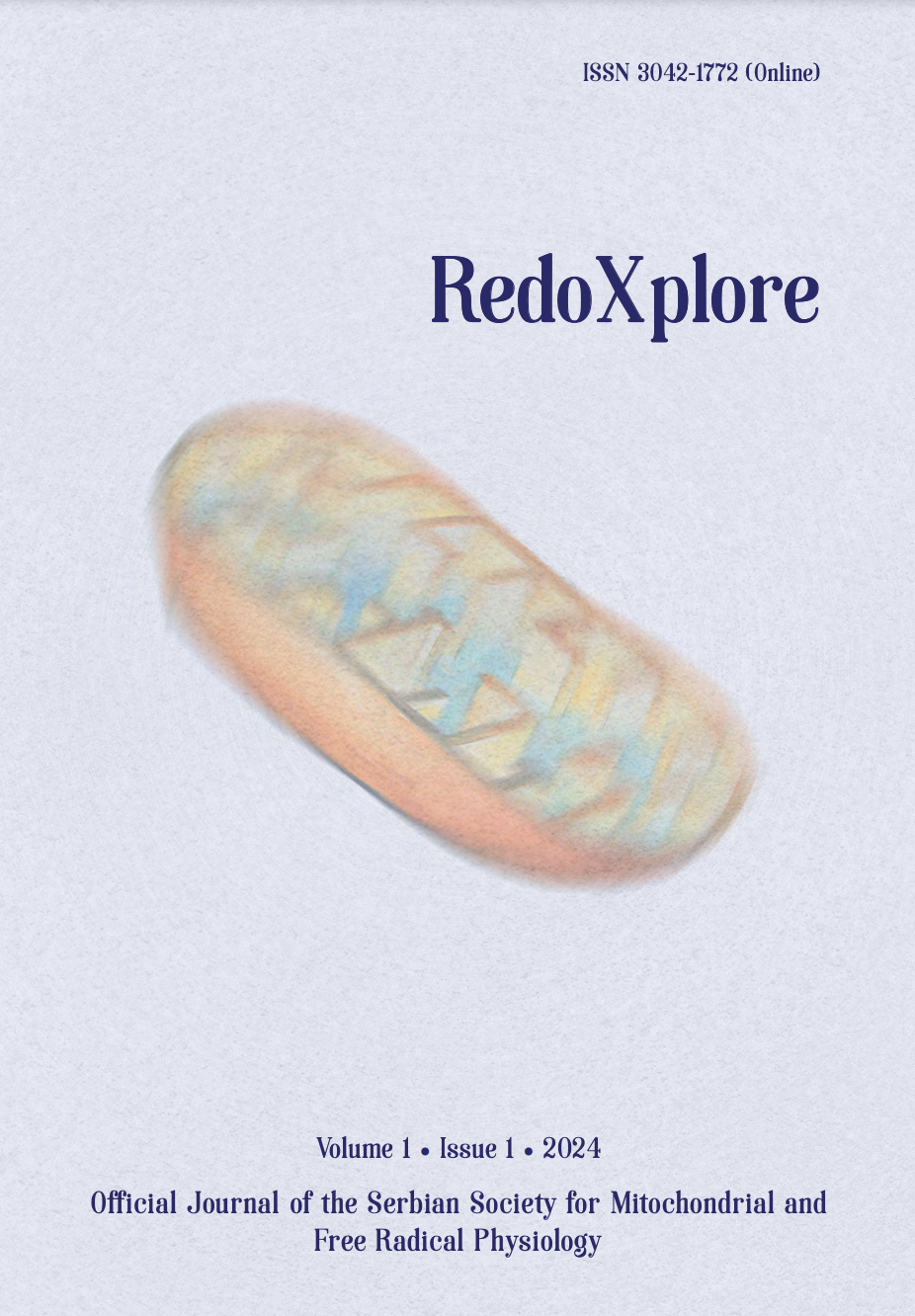
More articles from Volume 1, Issue 1, 2024
REDOX AND METABOLIC REPROGRAMMING OF BREAST CANCER CELLS AND ASSOCIATED ADIPOSE TISSUE - THE CORNERSTONES OF ADAPTIVE TUMOUR BEHAVIOUR
INSULIN MODULATES MITOCHONDRIAL STRUCTURAL AND FUNCTIONAL MOSAICISM IN BROWN ADIPOCYTES
NITRITE MITIGATES OXIDATIVE BURST IN ISCHEMIA/REPERFUSION IN BRAIN SLICES
NITRIC OXIDE, SUPEROXIDE AND PEROXYNITRITE – REDOX REGULATION OF THE CARDIOVASCULAR SYSTEM BY NITRO-OXIDATIVE STRESS AND S-NITROS(YL)ATION
DIETARY NITRATE AS PIVOT ON THE GUT MICROBIOTA-HOST REDOX COMMUNICATION
BLOOD REDOX STATUS IN DIFFERENT HUMAN PATHOLOGIES
Department of Cardiovascular Surgery, CHU of Liège , Liège , Belgium
Department of Cardiovascular Surgery, CHU of Liège , Liège , Belgium
Department of Cardiovascular Surgery, CHU of Liège , Liège , Belgium
Department of Geriatry, CHU of Liège , Liège , Belgium
Department of Clinical Chemistry, CHU of Liège , Liège , Belgium
Department of Clinical Physiology, CHU of Montpellier , Montpellier , France
Department of Clinical Physiology, CHU of Montpellier , Montpellier , France
Intensive Care Unit, CHU of Liège , Liège , Belgium
Department of Clinical Chemistry, CHU of Liège , Liège , Belgium
Editor: Bato Korac
Published: 29.08.2024.
Keynote lectures
Volume 1, Issue 1 (2024)
Abstract
The in vivo determination of oxidative stress always remains a great challenge. Our approach in Liège CHU consists of simultaneously measuring in blood samples four different kinds of biomarkers: enzymatic and non-enzymatic antioxidants, trace elements, markers of oxidative damage to lipids, and identification of sources leading to increased reactive oxygen species (ROS) production. All these biomarkers (n = 16) have been investigated in patients: 1) with Abdominal Aortic Aneurysm (AAA)1 or operated for Thoracic Abdominal Dissection (TAD)2, 2) suffering from Chronic Obstructive Pulmonary Disease (COPD)3 or FacioScapuloHumeral Myopathy (FSHM)4, 3) with COVID-195,6 and 4) with delirium7. When compared to our internal reference values, depletion in non-enzymatic antioxidants (vitamin C, β-carotene, vitamin C/vitamin E ratio, thiol proteins) and trace elements (zinc, selenium) was observed in the majority of these pathologies. By contrast, increased levels in glutathione peroxidase, copper/zinc ratio, lipid peroxides (ROOH), and myeloperoxidase are common in all these diseases.
Citation
Copyright

This work is licensed under a Creative Commons Attribution-NonCommercial-ShareAlike 4.0 International License.
Article metrics
The statements, opinions and data contained in the journal are solely those of the individual authors and contributors and not of the publisher and the editor(s). We stay neutral with regard to jurisdictional claims in published maps and institutional affiliations.






